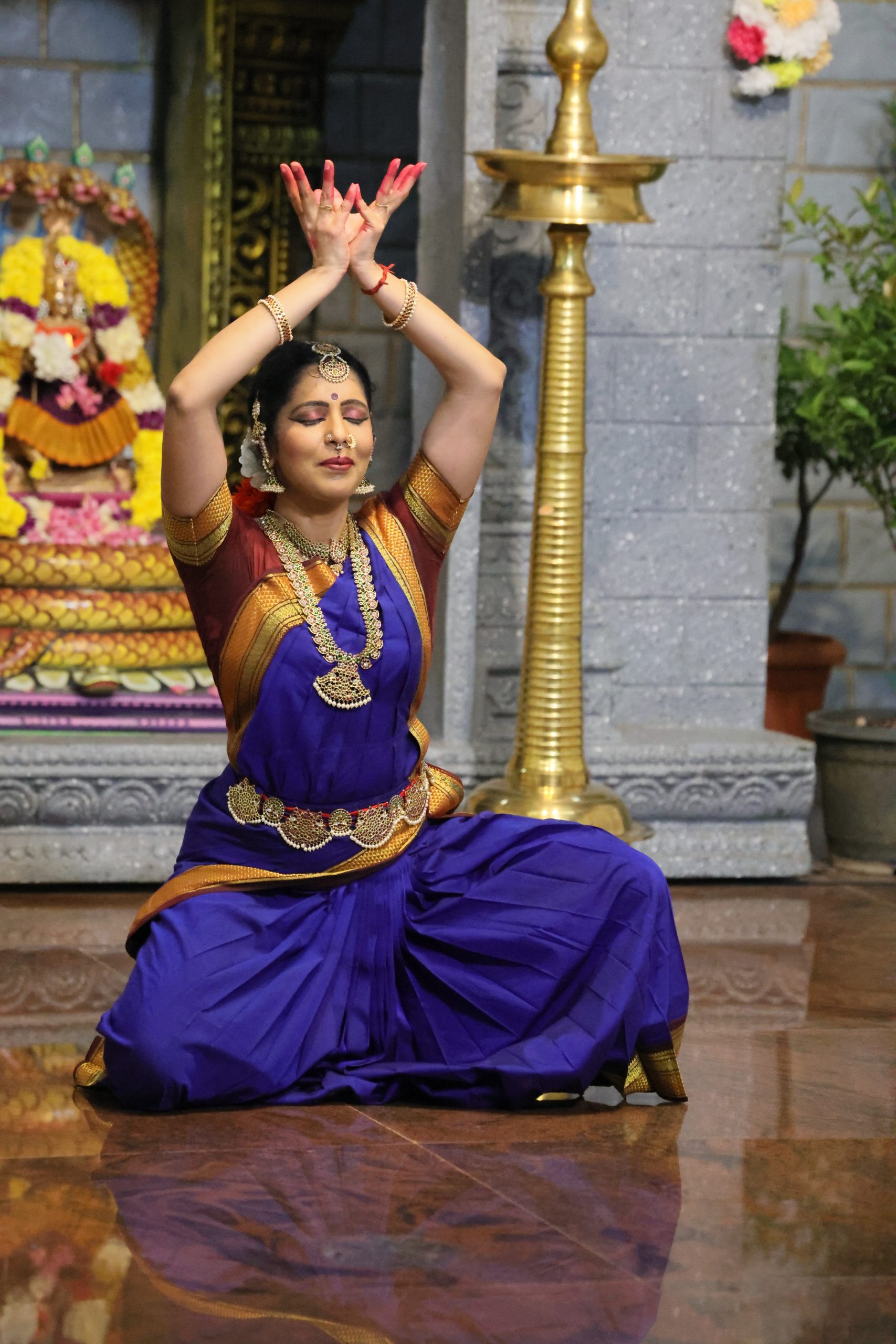There exists a beautiful relationship between a dancer and her dancing bells which is unique to each individual both traditionally and emotionally. The treatises talk in depth about the significance, application and usage of the nūpura which is also called as kiṅkiṇī in Sanskrit. The traditions have formalised how one can receive the nūpura and how it needs to be worn.
In earlier times when the devadasi spent about two to three years in their formal training, they were then allowed for their debut performance. It is during this performance that the bells were placed in the family altar of the guru and given to the girl. She would touch the guru’s feet and seek blessings. The guru and the older dasis tied the bell around her ankles. This debut performance is termed as Nūpura Pooje.
Traditionally, the nūpura can be in gold, silver, bronze or brass. As it is cost effective the brass bells are in vogue. In earlier days, each bell was tied using a long thick cotton thread where a knot was tied around each bell. However, in the recent times the leather pad to knit the bells are in use due to which the number of bells is reduced. Earlier, an experienced dancer would manage to have 50 bells in each leg. In Kathak art form, about 100 bells are worn on each leg. Different art forms have different number of bells that are used for the performance.
The sounds of the bell vary based on the movements. These variation in the movements is what creates a music in the bells which is a very important aspect for a dancer to be aware of because the music needs to be melodious. This rapport between the dancer and the bells are observed in an experienced dancer. While the main usage of the bells is to highlight the rhythm kept by the dancer without having to burden by tapping really hard. Also, the tying of the bells adds to the aesthetic beauty of the attire and the jingling sounds adds to the aesthetic of the sound.
The nūpura is considered to have a divine power due to which every time before wearing it, the dancer gives it to the guru who would chant the mantras and then after touching the guru’s feet, the dancer prays and wears the nūpura on the right leg first. Also, the dancers are not allowed to wear their footwear while they are wearing the nūpura. It is observed that the dancers do not share their nūpura as it carries energies. It is considered to be a blessing if a senior guru gives away their own nūpura to a dancer/student. Even now, on the auspicious day of Vijayadashmi the practise of offering pooja to the nūpura is done by the guru.
The tradition of Nūpura Pooje has existed from the ancient time till today in spite of many changes that has happened during different time periods. This proves that it was not a mere ritual but had a significant value due to which it has survived across so many generations even though the devadasi system is abolished. The sounds of Nūpura strongly emotes because of which it is important for the dancer to understand its application in usage. May the dancers sing through their bells.
-Dr Rashmi Thaper



